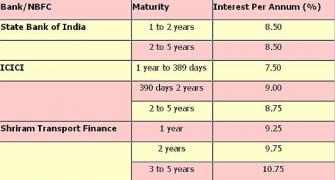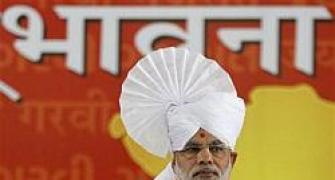 With interest rates expected to fall further, tax-free bond issuances are likely to receive a tepid response in the next financial year.
With interest rates expected to fall further, tax-free bond issuances are likely to receive a tepid response in the next financial year.
These tax-free bonds are priced below the yield of the 10-year benchmark government bond.
With falling interest rates, the yield is expected to drop significantly from current levels, making tax-free bonds an unattractive investment option.
In the current financial year, institutions that were allowed to issue such bonds could raise only about Rs 25,000 crore (Rs 250 billion), compared with the target of Rs 60,000 crore (Rs 600 billion) in the Union Budget 2012-13.
These institutions tried their best to raise money by extending the closing date of the first tranche of the issues.
They even came up with a second tranche. However, the response remained lukewarm.
“Even now, people are not subscribing to tax-free bonds, as the coupon rates have come down. Going forward, it is expected to come down even further, making it less attractive,” said Suresh Sadagopan, founder of Ladder7 Financial Advisories, which specialises in comprehensive financial planning.
For many people, a coupon rate of about seven per cent in a 10-15 year tax-free bond issue is not an attractive investment, because of which it will be difficult for infrastructure companies to raise money through this route in 2013-14, said Sadagopan.
In the 2013-14 Budget, Finance Minister P Chidambaram allowed tax-free bond issuances worth Rs 50,000 crore (Rs 500 billion) in FY14, Rs 10,000 crore (Rs 100 billion) less than allowed for FY13.
“I propose to allow some institutions to issue tax-free bonds in 2013-14, strictly based on the need and capacity to raise money in the market up to a total sum of Rs 50,000 crore (Rs 500 billion),”
However, he also said institutions were expected to raise only Rs 25,000 crore (Rs 250 billion)in the current financial year.
This is roughly 42 per cent of the Rs 60,000 crore (Rs 600 billion) allowed for FY13.
The Street’s view is the yield on the 10-year benchmark government bond, currently at 7.89 per cent, would drop 20-30 basis points (bps) by end-September.
The Street expects repo rate cuts of 50 basis points by the Reserve Bank of India till end-September.
These tax-free bond issuances hit the Street in the second half of the financial year, due to which these will be priced keeping the yield of the 10-year benchmark government bond at that time.
A few financial planners say the amount expected to be mobilised by tax-free bonds in the next financial year may be a mere Rs 10,000 crore (Rs 100 billion), one-fifth of the total issue size.
In such a scenario, the only respite is if the pricing of these bonds are made attractive.
“If government allows attractive pricing for tax-free bond issuances next financial year, they will sell.
This financial year, the pricing was very tight.
According to the government, the pricing should be 100 basis points lower than the 10-year government bond yield if it is a private placement tax-free bond issue of a ‘AAA’ rated company and 50 basis points below if it is a public issue,” said an issue arranger.










